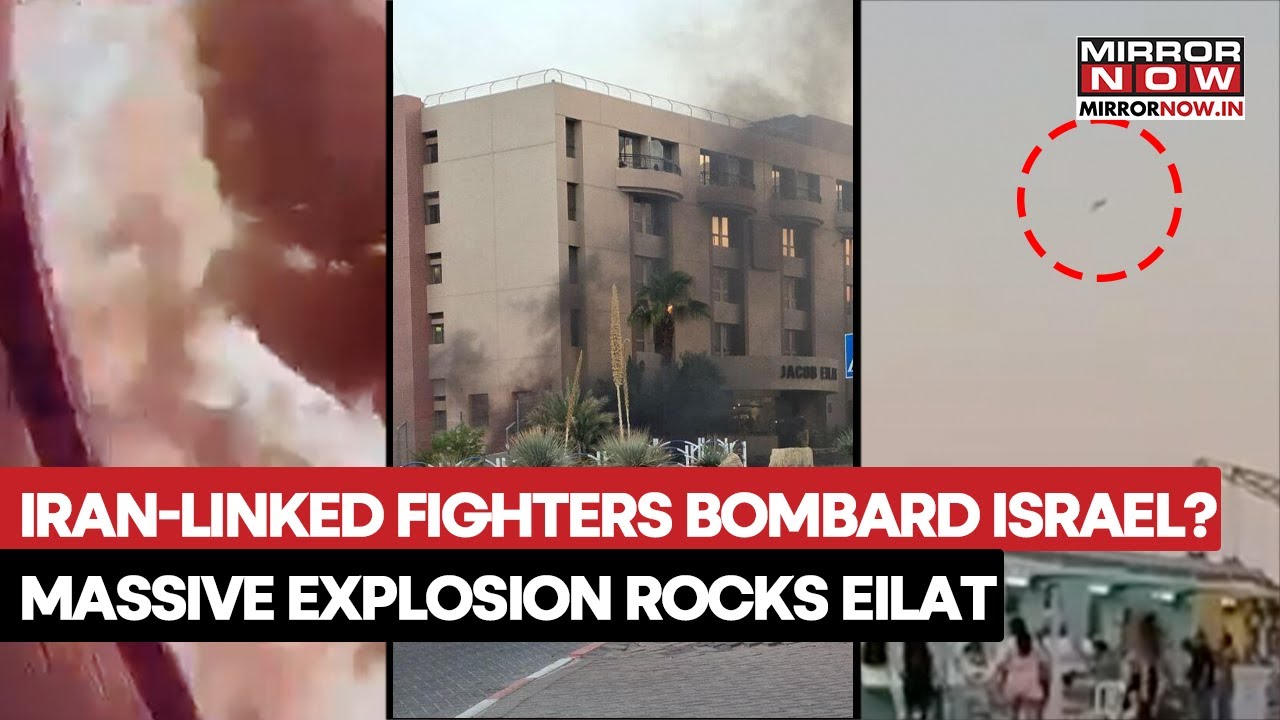
John Hawk Insunrated – Yemen once again finds itself at the heart of a regional flashpoint as a suspected Houthi drone attack targeted the Israeli city of Eilat. The incident occurred just days after Israeli air strikes devastated parts of Yemen including the capital Sanaa and the northern region of al-Jawf. These strikes reportedly killed more than 40 people according to Houthi sources.
The attack on Eilat has reignited fears of an escalating tit-for-tat conflict that could spread far beyond the borders of either nation. Footage from Eilat shows damage from the blast and locals fleeing to shelters as sirens echoed throughout the city. Israeli authorities have not yet confirmed the origin of the drone but suspicion immediately turned toward the Houthis due to the timing and pattern of recent hostilities. While no fatalities were reported in Eilat this time the symbolic impact of a direct hit on Israeli soil has reverberated across the region.
The suspected drone strike from Yemen marks a bold escalation by the Houthis who have previously launched similar attacks in the name of Palestinian solidarity. Since October 2023 the group has conducted missile and drone operations targeting Israel and shipping lanes in the Red Sea. The Houthis claim these actions are a direct response to Israel’s ongoing assault on Gaza.
This most recent strike appears to be a calculated response to Israeli attacks that left scores dead in Yemen just four days prior. Although the US and UK ceased airstrikes in May following a partial ceasefire agreement with the Houthis Yemen remains unstable and deeply divided. The Houthi movement controls most of the north including the capital and continues to battle an internationally recognized government backed by Saudi Arabia. Despite a general freeze on front lines since 2022 the strike on Eilat shows the Houthis are willing to carry their fight well beyond Yemen’s borders.
“Read about: Laos Is Mining Bitcoin to Build Mega Dams, The Future of Infrastructure Just Got Weird”
The fallout from the attack on Eilat ripples far beyond Yemen and Israel as major global powers find themselves increasingly entangled in this volatile web. In the past both the United States and the United Kingdom have launched strikes on Yemen in retaliation for attacks on Red Sea shipping and perceived threats to global commerce. While those operations were paused earlier this year tensions are flaring once again.
Analysts argue that if authorities confirm Yemen as the origin of the drone attack in Eilat, Western military forces will likely reengage in the region. Regional powers like Saudi Arabia and Iran monitor the situation with increasing concern. Saudi Arabia supports the Yemeni government in exile, while Iran strengthens its alliance with the Houthi leadership. The attack challenges Israel’s air defense capabilities and exposes vulnerabilities in the southern region of Eilat, an area that rarely faces such threats. These developments add urgency to security discussions and may shift future strategies across the Middle East.
While international headlines highlight drones and strikes, the humanitarian crisis inside Yemen continues to escalate. Years of ongoing conflict, economic collapse, and increasing isolation from military actions have devastated the country. Aid agencies warn that millions face famine and disease, with limited access to clean water and medical care. Israeli strikes earlier this week killed or displaced dozens of civilians and destroyed homes and infrastructure in al-Jawf and Sanaa. Overwhelmed hospitals in the capital struggle to treat the wounded as supplies run out quickly. Security threats prevent many humanitarian workers from reaching Houthi-controlled regions. As military tensions rise, civilians in Yemen bear the greatest burden. Whether the attack on Eilat directs more global attention to their suffering or drives the country further into isolation remains uncertain. Regardless, violence continues to define their daily reality.
In today’s conflict zones, the battlefield reflects not only casualties and territorial control but also strategic messaging. The Houthis launch every strike, including the suspected drone attack on Eilat, as a deliberate political statement. They aim to damage infrastructure and draw global attention to the Palestinian cause and the ongoing humanitarian crises in Yemen. Israel, on the other hand, considers these attacks direct provocations and serious threats to its national security.
Each strike invites not only retaliation but also intense media scrutiny. Social media platforms are flooded with conflicting narratives from all sides. Videos of the Eilat explosion trended online just hours after impact. Meanwhile statements from Houthi leadership frame the incident as an act of resistance. The messaging war is as fierce as the physical one with both sides attempting to control the global narrative. As the dust settles in Eilat the world waits to see who will strike next.
This article is sourced from aljazeera.com and for more details you can read at johnhawkinsunrated
Writer: Sarah Azhari
Editor: Anisa
John Hawk Insunrated - Many creators now adopt the anti perfection content workflow to publish quickly, learn fast, and grow…
John Hawk Insunrated - Many creators now adopt an anti perfectionist workflow guide to publish faster, learn from real feedback,…
John Hawk Insunrated - Artists, writers, and makers often underestimate how consistent creative practice daily reshapes their skills, confidence, and…
John Hawk Insunrated - Artists, workers, and students increasingly turn to creative practices for wellbeing to manage stress and protect…
John Hawk Insunrated - Many artists rely on personal sketchbook creative freedom to explore ideas safely without pressure or judgment.…
John Hawk Insunrated - Many professionals are experimenting with new skills to stay relevant, yet few truly analyze what works…